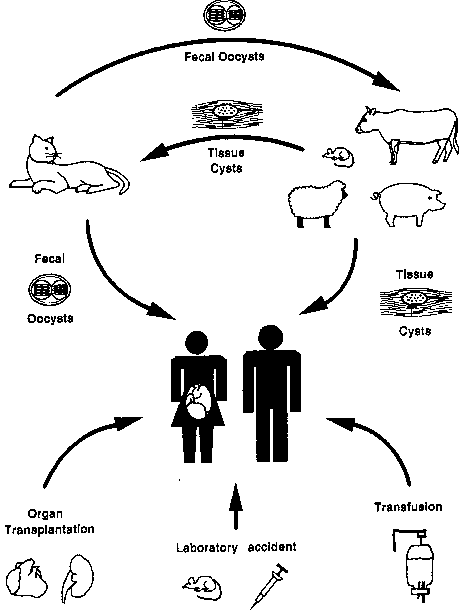- "Members of the cat family
(Felidae) are the only known definitive hosts for
the sexual stages of T. gondii and thus are the
main reservoirs of infection.
- Cats become infected with T.
gondii by carnivorism.
- After tissue cysts or oocysts are
ingested by the cat, viable organisms are
released and invade epithelial cells of the small
intestine where they undergo an asexual followed
by a sexual cycle and then form oocysts, which
are then excreted.
- The unsporulated oocyst takes 1 to
5 days after excretion to sporulate (become
infective).
- Although cats shed oocysts for
only 1 to 2 weeks, large numbers may be
shed.
- Oocysts can survive in the
environment for several months and are remarkably
resistant to disinfectants, freezing, and drying,
but are killed by heating to 70oC for
10 minutes.
 Human infection may be acquired in
several ways: Human infection may be acquired in
several ways:
- 1) ingestion of
undercooked infected meat containing
Toxoplasma cysts;
- 2) ingestion of the oocyst
from fecally contaminated hands or food;
- 3) organ transplantation
or blood transfusion;
- 4) transplacental
transmission;
- 5) accidental inoculation
of tachyzoites.
- The parasites form tissue
cysts, most commonly in skeletal muscle,
myocardium, and brain; these cysts may
remain throughout the life of the
host."- CDC (used with permission,
public domain)
- http://www.dpd.cdc.gov/DPDx/HTML/Toxoplasmosis.htm
|
